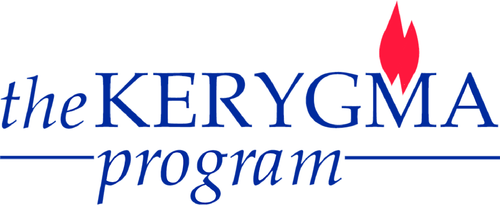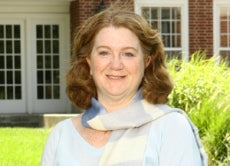Where the Arts and Ministry Meet
Where the Arts and Ministry Meet—
In a print-making course at the Minneapolis Institute of Art, Boyd Lien focused on wood blocks and the physical aspects of space and dimension. The Kerygma study DISCOVERING THE BIBLE—A New Generation benefited from Boyd’s interest in print-making. You can see his 30 designs, 15 for chapters covering the Old Testament and 15 for the New Testament, in the DISCOVERING THE BIBLE Resource Book. Simple line illustrations range from the burning flame where God spoke to Moses, set against the pyramids to symbolize the exodus in the Old Testament, to the grain of wheat planted by the sower to represent Jesus’s teaching about the Kingdom of God in the New Testament.
Boyd began attending a church in Minneapolis at age 11, becoming an ordained deacon in the church at 16, an ordained elder several years later, and continued his involvement as a college student.
Pastoral Ministry—It’s Not Just About Preaching
He described his pastor, Rev. Jerry Mettetal, as a mentor in ministry helping him to appreciate that there is much more to ministry than what you see in a Sunday morning worship service. Boyd remembers his pastor telling him, “You will be able to use art in your ministry more than you know.” That statement stayed with the young Boyd as his understanding of pastoral ministry as confined to preaching and counseling began to expand.
In the summers, he and his college friends participated in mission projects. While involved in a summer project after his junior year, he sensed a call to the ministry. Boyd phoned his parents, who were thrilled with the news. Upon returning to school for his senior year, Boyd changed his major from art education to art history. By Thanksgiving, he was considering admission to McCormick Seminary in Chicago. On a visit to the seminary, Boyd met Pamela Ertsgaard who was moving to Chicago to accept a job as church organist and administrator. Boyd proposed on their second date, and they have been married now for fifty-three years.
Boyd learned that his mentor in ministry was correct—you can combine the arts and ministry! In his first pastoral call, he created designs publicizing Christian Education events and youth programs. Using a Xerox machine, he published a curriculum based on the first vacation Bible school that he created.
Essential to his work at the time were meetings with Christian educators serving in other nearby New Jersey churches. He was also an active participant in APCE (Association of Presbyterian Church Educators) where he became friends with Dr. Donald Griggs (Discovering the Psalms—Passion, Promise, and Praise and Meeting God in the Bible—Sixty Devotionals for Groups).
Boyd recalled that “those national meetings became opportunities to share resources and network, to find out what’s going on. Educators are always wondering, ‘What’s out there; what do you have; what curriculum are you using; what works?’”
Don Griggs published a program Boyd had designed, Journey to Jerusalem, as part of an Abingdon Press series. An intergenerational program, Journey to Jerusalem could be used for summer vacation Bible schools or during Sunday morning programs. While for much of his ministry Boyd served in larger churches that had associate pastors, the programs he developed also worked well in small churches.
Learning centers and intergenerational activities were new at that time and Boyd made good use of both formats. His learning centers focused on “right brain activities to engage people with Bible passages and biblical stories. And that’s where the arts came in,” he added. Participants created designs on greeting cards or constructed mobiles that expressed the text in images.
Boyd greatly respects his mentor Rev. Mettetal as both a preacher and a teacher. He recalled his years growing up in the church as a time of “absorbing my pastor’s process of how to teach as I was being taught myself. How do you ask a question? How do you affirm the people who are in your group?”
Design—From Curriculum to Covers
The Kerygma Program first approached Boyd to assist Kenneth Clark who was writing a new study, Discovering the Bible. Later, he was later asked to create the second edition, Discovering the Bible—A New Generation, and spent two years on the revision, adding slides and other visuals.
“I decided that I would develop the curriculum as I would teach it,” he recalled. “That first year, I field-tested it with the group who met on Tuesday nights at a church where I had served. They knew they were helping Kerygma to develop the course. Then I did the artwork for the cover and created the symbols for each session. A part of each visual led into the next. I had a lot of fun doing that.”
Later, Boyd Lien wrote the Leader’s Guide for Kerygma’s study Second Corinthians—Living Letters in Christ (Resource Book by Dr. Calvin Roetzel) and designed the cover. Using a motif that is widely used today, he created “an image made to look like a mosaic—all of these pieces coming together to form a community in Christ. I like how it ended up.”
Visualizing Isaiah
Boyd had long wanted to develop a study of Isaiah that both focused on the text and emphasized the visual nature of the language. The study also highlights the inspiration that many passages from Isaiah have provided to artists working in a variety of media—from sculpture to frescoes, from music to public speaking.
As with earlier Kerygma publications, Boyd had ideas for the cover. At the time he had been working on another design using folk art created with intricate paper cutting—known as the German scherenschnitte and the Polish wycinanki. Using this medium for the cover would be very interesting he thought, as he envisioned opening the Isaiah scroll to reveal images referenced inside. “As you know from the curriculum, Isaiah is filled with visions and images and metaphors. So, I just looked through all of those and thought how I would put some of them in a design.”
“The first cover was easy,” Boyd admitted, “because in ISAIAH, Part One---Holy, Holy, Holy (the study of the first 39 chapters of the book of Isaiah) the mountain of the Lord is critical, as is the temple. The vineyard is another major image. So those motifs came together.”
The covers for Isaiah Parts Two and Three were more challenging as the images were profuse. So many to choose from! Because the Servant Songs are found in Isaiah Chapters 40-55, Boyd chose the servant as the central image for the cover of ISAIAH, Part Two—Do Not Be Afraid!
“My absolute favorite passage, perhaps in the entire Old Testament as well as in Isaiah,” Boyd acknowledged, “is in Isaiah 43. So, I had to include ‘when you pass through the waters and when you walk through the fire, do not be afraid, for I am with you,’ images prominent in the bottom of the illustration.”
Atop the head of the servant is what appears to be a halo, or what Boyd described as “God’s holiness resting upon the servant as an indication of the unity between heaven and earth, God embracing the work of that servant.”
Isaiah 40 begins with “prepare the way of the Lord” and includes the leveling of the mountains. So Boyd drew lines at the bottom of the design to suggest a straight path. Another key image in the second part of Isaiah is the shepherd, and so sheep are in the design.
At the top of the design, the frond-like or feather-like images represent Isaiah 55:12, the trees in the field clapping their hands at the magnificent vision of creation. Also depicted are mountains referenced in Isaiah 52:7, “how beautiful on the mountains are the feet of the messenger who announces peace, who brings good news, who announces salvation.” Sheep are included because Isaiah 40:11 indicates that “he will gather the lambs in his arms,” completing the major images in the scroll for Isaiah, Part Two.
To depict images from Isaiah, Part Three (chapters 56-66), Boyd focused on references to the “gathering God, this God who is going to gather the exiles and who is going to gather all. There is going to be this wonderful welcome into God’s house, so to speak.”
The central image at the bottom of the open scroll for ISAIAH Part Three—Your Light Has Come depicts hands extending forward. On the wrists are broken shackles, indicating people who have been released from captivity, who now reach toward the gates—gates opened to welcome them into the city and into the temple, suggesting an image for Isaiah 60:11.
There are a lot of images in the open scroll for Isaiah Part Three, because, well—there is a lot going on visually in Isaiah Chapters 56-66. The flowers on either side of the scroll depict garland referred to in Isaiah 61:3 and Isaiah 61:11, “For the earth brings forth its shoots and as a garden causes what is sown in it to spring up, so the Lord God will cause righteousness and praise to spring up before all the nations.” “That’s my vision of what is springing up—the garland,” Boyd said. “And with these flowers that make up this garland righteousness and praise are springing up.”
Behind the temple is a blue shape, depicting a three-curved crown with tiny jewels on the top. The crown is a reference to Isaiah 62:3, “You shall be a crown of beauty in the hand of the Lord and a royal diadem in the hand of your God.
Here, as in the covers for Isaiah Parts One and Two, a mountain appears in the distance. “The mountain is a constant theme in all three designs,” Boyd explained. “It’s prominent in the cover design for Isaiah, Part One. It’s barely seen in the cover for Isaiah Part Two, but it’s there behind the servant. And then the mountain comes back in the cover design for the Isaiah Part Three. The mountain motif is critical—as Mount Zion, the dwelling of God—and is a theme throughout Isaiah.”
Why a Pink Sky?
Last, but hardly least, you will notice a pink sky at the top of the open scroll for Isaiah Part Three. Why pink? Boyd referred to Isaiah 66:22, that tells of a new heaven and new earth.
I asked if the pink might be the glow of morning, the dawn of a new day. “It could be the dawn,” Boyd reflected. “I thought if there were to be a new heavens and a new earth, things should be in different colors. It’s the new heavens and a new earth, so let’s not expect things to be the old just heated up again.”
There is another important part to the design. In Isaiah 60:19, we find “The sun shall no longer be your light by day, nor for brightness shall the moon give light to you by night, but the Lord will be your everlasting light, and your God will be your glory.”
As you look at the images inside the scroll, you will see that the sun is not in the sky, but instead, is visible through the open doorway that leads into the temple. Boyd explained, “In the door opening, that’s the light; the Lord will be your everlasting light.” In the doorway, he included very faint lines that form a cross. “If I had colored in the parts a little differently,” he said, “you would see a cross there. It’s there, but it is very faint, very subtle. But, it’s there.”
Speaking further about the sun in the doorway, Boyd added, “you could ask what the sun is doing inside the building. It’s the light; the light is in the building. Isaiah 60 is repeated in Revelation 21:23—there is no need for a lamp, for the Lord will be your light in the kingdom.”
“Of course, the challenge was how to depict a temple with just a few lines. I don’t know what the temple looked like; nobody knows what the temple really looked like. So, what would evoke that? What I wanted more than anything was for the doors to be the key part of the image, because that is what the entire book of Isaiah was about. The hands are lifted in praise and exclamation or excitement. Their shackles have come off their wrists; they have been released. And now, they are heading in.”
Amen. Thus, may it be so.



